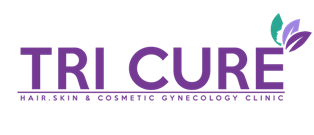PRP Therapy for Hair Regrowth
Hair loss is a common concern for both men and women, and finding effective treatments is often a priority for those looking to regain their confidence and self-esteem. Traditional hair restoration methods, such as medications and hair transplants, may not work for everyone. However, PRP therapy for hair regrowth is quickly gaining popularity as a safe and effective solution. In this blog, we will explore how Platelet-Rich Plasma (PRP) therapy works for hair restoration, its benefits, what you can expect from the treatment, and why it might be the ideal option for you.
What is PRP Therapy?
PRP therapy is a minimally invasive treatment that uses your body’s own platelets to stimulate healing and promote tissue regeneration. In the context of hair loss, PRP is used to encourage hair follicles to grow thicker and healthier hair. The procedure involves drawing a small amount of your blood, which is then processed to concentrate the platelets and growth factors. This PRP solution is injected into the scalp to stimulate the natural growth of hair follicles, promote blood circulation, and rejuvenate dormant hair follicles.

How Does PRP Therapy Work for Hair Regrowth?
PRP therapy for hair restoration works by harnessing the body’s natural healing abilities. Here’s a breakdown of how the procedure works:
Blood Collection: A small amount of blood (typically around 10-30 mL) is drawn from your arm, much like any other blood test.
Processing the Blood: The blood is placed in a centrifuge, a machine that spins the blood at high speeds to separate its components. This process isolates the platelet-rich plasma from the red blood cells and other elements in the blood.
Platelet Concentration: The concentrated plasma, which is rich in growth factors, is then carefully extracted from the sample. These growth factors play a crucial role in tissue repair and cellular regeneration, which helps stimulate hair growth.
PRP Injection: The concentrated PRP is injected into the scalp at areas where hair thinning or hair loss is occurring. The injections are typically spaced a few millimeters apart, ensuring the PRP reaches the targeted areas.
Hair Regrowth: Over the next several weeks to months, the PRP begins to encourage the regeneration of hair follicles, improving hair thickness, volume, and overall health.
Benefits of PRP Therapy for Hair Regrowth
PRP therapy offers a number of compelling benefits for individuals seeking a natural solution to hair loss. Some of the most notable advantages include:
1. Non-Surgical Treatment
PRP therapy for hair restoration is a non-surgical procedure, meaning there are no incisions, stitches, or scars involved. This makes it an attractive option for individuals who want to avoid the risks associated with traditional hair transplant surgery.
2. Natural and Safe
Since PRP therapy uses your body’s own blood and platelets, it is a natural treatment that minimizes the risk of allergic reactions or side effects. There are no foreign substances or chemicals introduced into the body, making it a safe and well-tolerated option for most patients.
3. Minimal Downtime
One of the main appeals of PRP therapy is that it requires little to no recovery time. Most people can resume their daily activities immediately after the procedure, with only minor redness or swelling in the treated areas. This makes it a convenient treatment for those with busy schedules.
4. Stimulates Natural Hair Growth
PRP works by stimulating the natural growth of hair follicles. The growth factors in the plasma help promote the formation of new hair cells and improve the health of existing hair follicles, leading to stronger, thicker, and healthier hair.
5. Long-Lasting Results
While results vary from person to person, many individuals notice significant improvements in their hair growth after a few treatments. With continued PRP sessions (typically every 3-6 months), the results can last for months or even years, helping individuals maintain a fuller, thicker head of hair.
Who is a Good Candidate for PRP Therapy?
PRP therapy is suitable for many individuals, but it’s especially effective for those with early-stage hair loss or thinning hair. Good candidates for PRP therapy include:
- Individuals with androgenic alopecia (pattern baldness), which is the most common cause of hair loss in both men and women.
- People experiencing hair thinning or mild hair loss due to stress, hormonal changes, or nutrient deficiencies.
- Those who are not yet ready for a hair transplant but want to improve the thickness and health of their existing hair.
- Healthy individuals who are not taking medications that could interfere with blood clotting, as this could impact the effectiveness of the PRP injections.
It’s important to consult with a professional healthcare provider or hair restoration expert to determine if PRP therapy is right for you.
Conclusion
PRP therapy for hair regrowth is a promising and innovative treatment for those looking to combat hair loss. With its ability to stimulate the body’s natural healing processes, this non-invasive procedure offers a natural, safe, and effective solution to thinning hair. If you’re considering PRP therapy, be sure to consult with a qualified specialist to determine if it’s the right choice for you. Whether you’re looking to maintain your existing hair or revitalize thinning areas, PRP therapy could be the solution you’ve been waiting for to achieve fuller, thicker hair.

